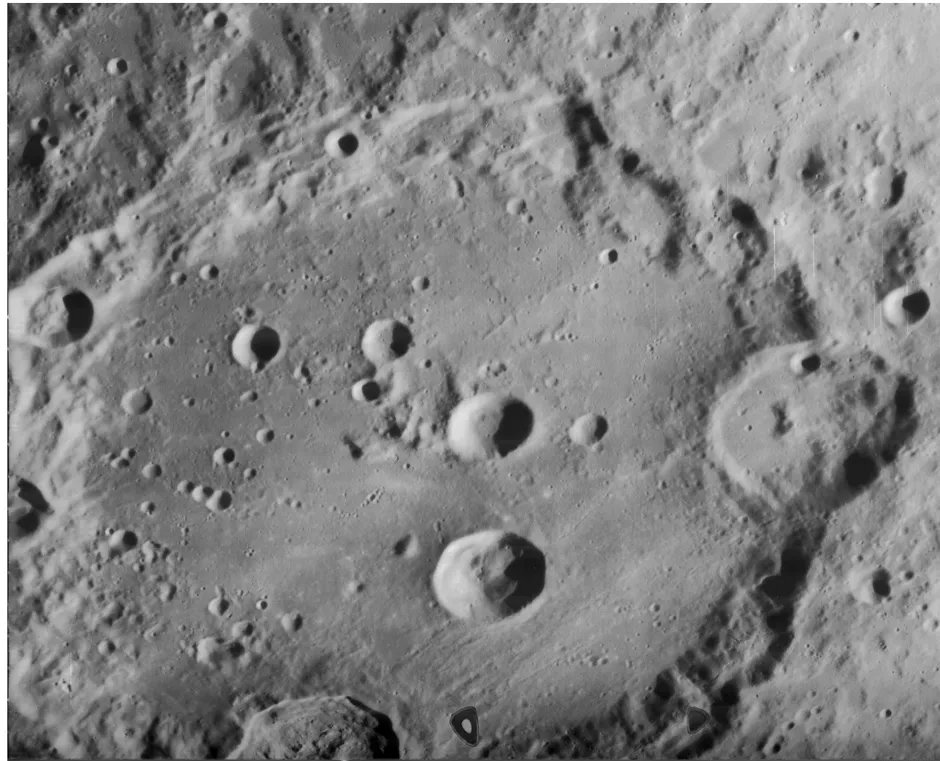Readings from NASA’s Stratospheric Observatory for Infrared Astronomy (SOFIA) indicate that water is present in Clavius Crater - one of the largest craters on the Moon.
This discovery is important because water was thought to be present on the Moon only in the permanently shadowed craters near the lunar south pole. Although Clavius is in the southern hemisphere, it is not at the poles, and its interior is exposed to sunlight. Since it seems that water can survive in the lunar surface here, it implies that water may be much more widely distributed across the lunar surface than previously thought.
Even so, the abundance of the water is not high. For comparison, the Sahara Desert possesses 100 times more water than that found in the lunar surface material by SOFIA.
We ask Mahesh Anand, Professor of Planetary Science and Exploration at the Open University, UK, how the discovery was made and how it will shape future missions to the Moon.

How significant is this finding?
Finding the signature for the presence of molecular water in the sunlit portion of the Moon is what makes this more significant than perhaps it would have been, because water has been detected previously on the surface of the Moon.
This is quite a significant finding. Finding water on the Moon is not totally unexpected but what was not known before was whether this water was present as hydroxyl, which is one atom of oxygen attached to an atom of hydrogen, or was it actually H2O, two hydrogen atoms attached to one oxygen. This is molecular water and is typically what a layperson would understand as water.
Molecular water, arguably, has only been detected once before, when the LCROSS [Lunar Crater Observation and Sensing Satellite] impactor hit a permanently shaded crater in the southern polar region. So, whatever was there was lifted up in the ejector plume.
There was some water ice detected by that mission, but molecular water as such had not been confirmed in the sunlit areas of the Moon, which I think is why this discovery is very exciting. Scientifically, forming water or hydroxyl can happen through very different routes, and so could have quite a different meaning and significance in terms of what its physical status might be, and how amenable it might then become to future explorers for using it as a resource.
Read more about space exploration:
- Space exploration: how might the next 50 years progress?
- Elisa Raffaella Ferrè: What happens to the brain in space?
- Move over, Mars: why we should look further afield for future human colonies
Why has it taken so long to find water on the Moon?
I think we have to put ourselves back in the early 1970s, when we had some people visiting the Moon [NASA’s Apollo missions]. Based on those observations, we never saw any hint of water. All the lunar soil was so dry and dusty that the astronauts were having difficulty breathing after their activities. Then the Moon’s dust or rock samples were back on Earth, there was a lot of work done to ascertain whether there was any hint of water.
There was none – but that was with the technology that was available. Also, we must remember that the Apollo mission did not go in search of water. So in some ways, the right questions weren't posed at the time. Instead, the question posed was, can humans actually safely land on the Moon and then return to Earth?
Now, there was speculation, even before the Apollo era, in 1950s that there could be water in these permanently shadowed regions of the Moon but the problem was that none of the Apollo missions or any subsequent missions until the 1990s, were really equipped with an instrument that could detect anything inside these very cold, dark craters.
So, the spacecraft really needed to have ‘night vision goggles' to allow them to detect the presence of water ice, and that didn't happen until the 1990s. Two missions in particular called Clementine and Lunar Prospector.
Where did the lunar water come from?
Right! Finding water is one thing but the next question is, where did that water come from? Hydrogen occurs in two forms [isotopes]. One is hydrogen as we know it, where it has one proton in its nucleus, the other is called deuterium, which contains a proton and a neutron. The Sun gives out almost pure hydrogen in the solar wind, but deuterium can form in molecular clouds [clouds of gas in interstellar space], meaning it could have actually come from much further out in the Solar System or even beyond the Solar System.
So imagine a scenario where a comet from far away has collided with the Moon and delivered a lot of water-rich material to the lunar poles. The water from the comet will have a unique hydrogen isotope composition compared to water built from hydrogen from the solar wind or from rocks inside of the Moon. It’s like the comet’s own DNA for water.
If I were to then go and collect the lunar dust from this polar region, where the comet has contributed some water and I bring it back into the lab, where I measure the isotopic composition of the water, alongside how much water is present, I will be able to say X percent of this water is of cometary origin. So, the combination of measuring the amount of water and the isotopic composition will tell us a great deal about where that hydrogen, and so the water, might have come from.

Does this make the prospect of human exploration of the Moon easier?
There are so many ways it helps, that it’s difficult to distill it all into one sentence. The south polar region is popular right now as a destination because that's where multiple missions have already indicated the possible presence of water in the permanently shaded craters. But now, if we are also seeing the possibility of some form of water in non-shaded regions, then that means that you improve your chances of actually finding water without risking your life or instrument going down into a hole, which may be less than –200° Celsius.
And this is not just about taking someone to the Moon. If you think about it, the inspirational value that this has for the next generation of scientists is tremendous. What it shows is that when you actually look deep enough, and then your mind is curious, you make these discoveries that nobody had thought possible.